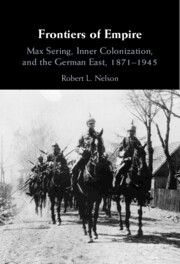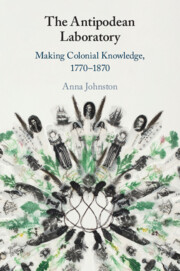146 results
1 - Models of Poet and Nation
- from Part I - Change and Renewal
-
-
- Book:
- The Cambridge Companion to Australian Poetry
- Print publication:
- 13 June 2024, pp 21-37
-
- Chapter
- Export citation
9 - High Delicate Outline
- from Part III - Authors
-
-
- Book:
- The Cambridge Companion to Australian Poetry
- Print publication:
- 13 June 2024, pp 153-166
-
- Chapter
- Export citation
4 - Above and Below
- from Part II - Networks
-
-
- Book:
- The Cambridge Companion to Australian Poetry
- Print publication:
- 13 June 2024, pp 73-88
-
- Chapter
- Export citation
31 - Two-Spirit Writers and Queer Native American Literature
- from Race and the Politics of Queer and Trans Representation
-
-
- Book:
- The Cambridge History of Queer American Literature
- Published online:
- 17 May 2024
- Print publication:
- 06 June 2024, pp 581-598
-
- Chapter
- Export citation
Chapter 7 - Suffering, Sentiment, and the Rise of Humanitarian Literature in the 1830s
-
-
- Book:
- Nineteenth-Century Literature in Transition: The 1830s
- Published online:
- 30 May 2024
- Print publication:
- 06 June 2024, pp 147-169
-
- Chapter
- Export citation
1 - Echoes of The Rite in Latin-American Music and Literature
- from Part I - Rethinking the Historiography of Musical Modernism
-
- Book:
- Musical Modernism in Global Perspective
- Published online:
- 23 May 2024
- Print publication:
- 30 May 2024, pp 31-65
-
- Chapter
- Export citation
Praxis, Persistence, and Public Archaeology: Disrupting the Mission Myth at La Purísima Concepción
-
- Journal:
- American Antiquity , First View
- Published online by Cambridge University Press:
- 27 May 2024, pp. 1-18
-
- Article
- Export citation
“The Indian Side of the Question”: Settling the Story of Potawatomi Removal in the Twentieth-Century Midwest
-
- Journal:
- The Journal of the Gilded Age and Progressive Era / Volume 23 / Issue 2 / April 2024
- Published online by Cambridge University Press:
- 17 May 2024, pp. 170-189
- Print publication:
- April 2024
-
- Article
- Export citation
1 - Shelley, Treaty-Making, and Indigenous Poetry
-
-
- Book:
- Percy Shelley for Our Times
- Published online:
- 07 March 2024
- Print publication:
- 14 March 2024, pp 23-42
-
- Chapter
- Export citation
Dispelling the Fantasy of Innocence: Complicity and the Cultivation of Transgression in Settler Colonial Contexts
-
- Journal:
- Canadian Journal of Political Science/Revue canadienne de science politique / Volume 57 / Issue 1 / March 2024
- Published online by Cambridge University Press:
- 05 January 2024, pp. 1-20
-
- Article
-
- You have access
- Open access
- HTML
- Export citation

Frontiers of Empire
- Max Sering, Inner Colonization, and the German East, 1871–1945
-
- Published online:
- 04 January 2024
- Print publication:
- 25 January 2024
A Pint-Sized Public Sphere: Compensatory Colonialism in Literature by Elite Children During the Gilded Age and Progressive Era
-
- Journal:
- The Journal of the Gilded Age and Progressive Era / Volume 23 / Issue 1 / January 2024
- Published online by Cambridge University Press:
- 16 April 2024, pp. 9-25
- Print publication:
- January 2024
-
- Article
- Export citation
18 - On the Peripheries of the Japanese Archipelago
- from Part III - Social Practices and Cultures of Early Modern Japan
-
-
- Book:
- The New Cambridge History of Japan
- Published online:
- 15 January 2024
- Print publication:
- 23 November 2023, pp 603-628
-
- Chapter
- Export citation
9 - The Other British Colonies
- from Part II - The British Colonies
-
-
- Book:
- The Cambridge History of the Age of Atlantic Revolutions
- Published online:
- 20 October 2023
- Print publication:
- 09 November 2023, pp 248-268
-
- Chapter
- Export citation
Chapter 1 - Decolonizing the University
- from Part I - Identities
-
-
- Book:
- Decolonizing the English Literary Curriculum
- Published online:
- 02 November 2023
- Print publication:
- 09 November 2023, pp 23-41
-
- Chapter
-
- You have access
- Open access
- HTML
- Export citation
Chapter 24 - Postcolonial Poetry and the Decolonization of the English Literary Curriculum
- from Part IV - Canon Revisions
-
-
- Book:
- Decolonizing the English Literary Curriculum
- Published online:
- 02 November 2023
- Print publication:
- 09 November 2023, pp 454-472
-
- Chapter
-
- You have access
- Open access
- HTML
- Export citation
“Une pièce d’étoffe que nous aurons à faire”: Louis Riel's Utopia: Between Prophecy and Politics
-
- Journal:
- Canadian Journal of Political Science/Revue canadienne de science politique / Volume 56 / Issue 4 / December 2023
- Published online by Cambridge University Press:
- 06 November 2023, pp. 917-935
-
- Article
-
- You have access
- Open access
- HTML
- Export citation
3 - Outside the Archive
-
- Book:
- Mooring the Global Archive
- Published online:
- 19 October 2023
- Print publication:
- 05 October 2023, pp 80-121
-
- Chapter
-
- You have access
- Open access
- HTML
- Export citation
Introduction
-
- Book:
- The Antipodean Laboratory
- Published online:
- 21 September 2023
- Print publication:
- 05 October 2023, pp 1-30
-
- Chapter
- Export citation

The Antipodean Laboratory
- Making Colonial Knowledge, 1770–1870
-
- Published online:
- 21 September 2023
- Print publication:
- 05 October 2023



